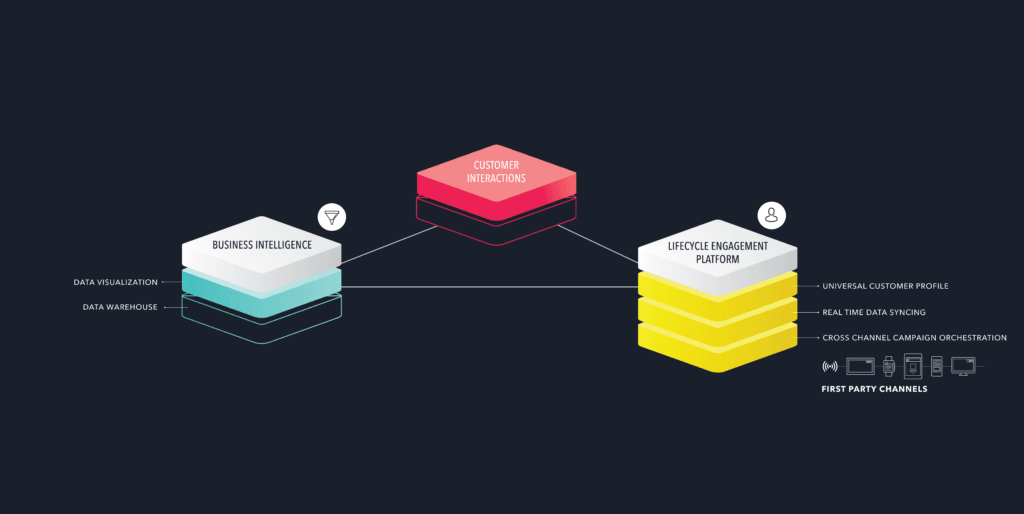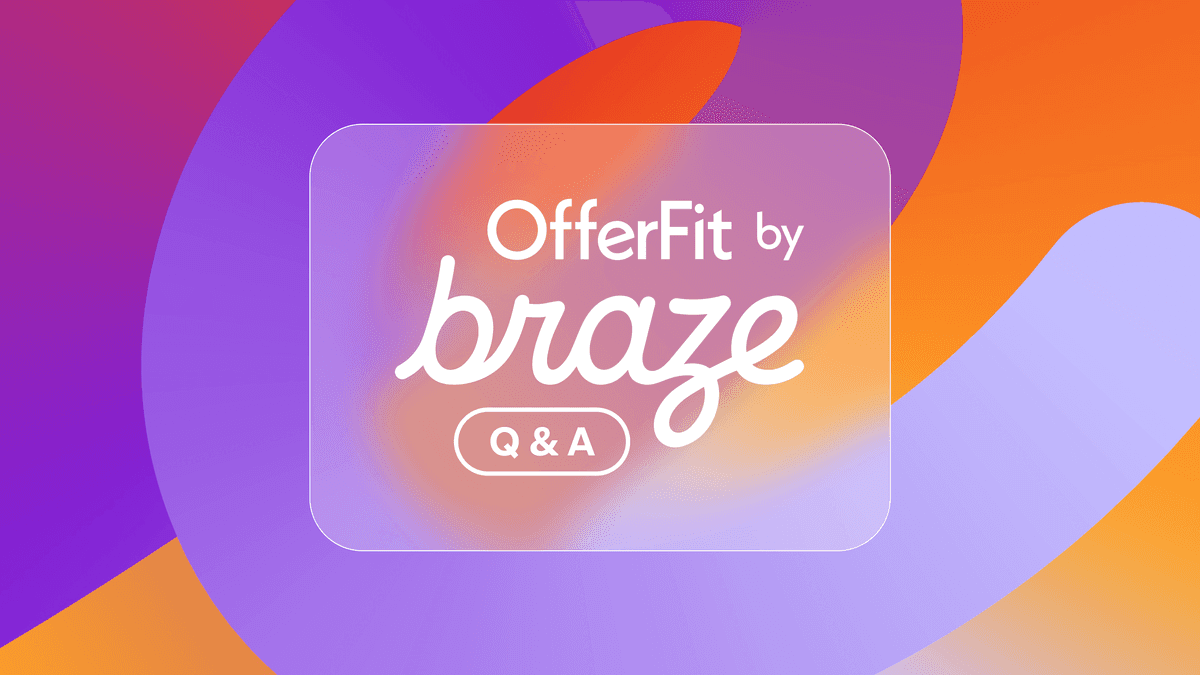What’s a Marketing Tech Stack, Anyway?
Published on April 24, 2017/Last edited on April 24, 2017/10 min read


Todd Grennan
Content Production Principal, Content Marketing at BrazeBefore the internet, marketing could be a pretty low-tech occupation. But the rise of the web, mobile, and other emerging technologies has made digital experiences central to the customer/brand relationship, giving brands powerful new ways to understand, reach, and engage their customers while also creating some new challenges.
These days, being an effective marketer means understanding and leveraging technology. What those technologies are and how you make use of them may change from role to role, but in today’s digitally-focused world, you just won’t reach your business goals if you don’t have the right technologies at your disposal and the knowledge you need to use them in concert.
Forward-looking marketers meet this challenge by assembling the technologies they use into comprehensive marketing technology stacks. Using a marketing tech stack can make your marketing smarter, more efficient, and support stronger long-term results—but only if you build and maintain your stack thoughtfully. To help out, we’ve put together a guide to get your started:
What’s a marketing tech stack?
A marketing technology stack is a collection of different kinds of software used to execute a given brand’s marketing strategy. In essence, a stack is a concept, a way of thinking about the full array of technologies that impact each customer’s user journey and help form their digital experience of your brand.
Wait, what’s marketing tech?
Marketing tech is any technology that supports a marketing goal. Usually, though, when we talk about marketing technology, we’re talking about software. Marketing software can be hosted on your company’s in-house computers and servers, or provided via the cloud as a software as a service (SaaS) product. These tools can serve a wide range of functions and purposes, from making it easier to manage user data, to helping marketers carry out customer engagement efforts, to supporting the optimization of future outreach campaigns, and a lot more.
Does every company have a marketing tech stack?
While not every company thinks of the software and other marketing tools that they depend on to influence their audience’s user journey as a “stack,” it’s the rare brand that doesn’t use any marketing technology, or uses only one tool. If you use even two marketing tools, then you’ve technically got a stack—maybe not an ideal one, or one that’s been consciously constructed, but a stack nonetheless.
That being said, there are a couple exceptions. There’s a small number of companies that use so little marketing software (or who have a ton of developers sitting around with nothing better to do) that they choose to build all or most of their marketing tech tools in-house, creating a sort of proprietary marketing tech stack. Separately, some brands choose to depend on a single marketing tech provider—known as an all-in-one marketing cloud—to provide all of their tools in one place.
What’s the difference between a marketing tech stack and a marketing cloud?
Here’s the basic pitch for a marketing cloud: instead of having to do the work involved with assembling a best-in-class marketing stack on your own, you can pay for a bigger comprehensive marketing tech solution, something that can address all of your marketing needs in one place—and for one price. That sounds good on paper, but there’s a reason the most forward-looking brands have started moving away from marketing clouds: innovation.
In 2011, there were about 150 marketing technology vendors out there; right now, there are more than 3,800—and the number keeps growing! And as the number of marketing technologies continues to rise and more specialized marketing tech solutions arise, it becomes harder and harder for any single company to become (and stay) best-in-class in every area. Building software means making decisions about what’s a priority and what isn’t, and inevitably some functionality will take a backseat. That’s not a problem for vendors that focus all their energy, resources, and expertise on a particular need or aspect of marketing, but it’s a major issue for all-in-one clouds, which often find themselves falling behind their more specialized competitors as technology advances and the marketing landscape evolves.
Putting together a best-in-class marketing stack takes more thought and consideration than just buying a marketing cloud, but it also makes it possible to ensure that you have the tools you need to stay on top of changing customer behavior, as well as emerging platforms and outreach channels for engaging those customers.
What layers make up a marketing tech stack?
The truth is, there’s no one-size-fits-all stack that all companies can implement. Different businesses have different marketing needs and require stacks with different components to meet those needs. That being said, there are a few customer-focused marketing tools that have a place in most companies’ best-in-class stacks:
1. Lifecycle Engagement Platforms
This kind of platform is built to help marketers take action to influence their audience’s user journeys. That means providing tools that make it easier and more efficient for brands to segment their audience based on each customer’s real-time behaviors across a variety of platforms (such as mobile apps, website, point-of-sale transactions, and more), automate cross-channel lifecycle marketing campaigns, carry out a/b or multivariate tests of customer messaging, and optimize future campaigns based on campaign analytics.
2. Analytics Platforms
This type of solution is intended to help brands better understand their audience by analyzing large volumes of customer data, making it possible to—for instance—uncover hidden insights and create highly-nuanced audience segments to more effectively target customers at different stages of the user lifecycle. Ideally, it should be able to seamlessly send data to and from your lifecycle engagement platform in real time to allow marketers to take effective action based on those insights (and using those segments).
3. Data Management Platforms (DMPs)
This kind of platform simplifies the process of controlling and acting on the first-party customer data that your brand captures from its apps, websites, etc. by serving as a sort of data clearinghouse for marketers. You can stream data into your data management platform and then seamlessly send that data to other marketing tools to, for instance, enrich that data with additional context, pull in app-install attribution data, and add in nuanced location information for each customer, then port that enriched information back to your lifecycle engagement platform to take action.
With these three technologies working in tandem, it’s possible to collect customer behavior data (lifecycle engagement platform), carry out in-depth analyses of that data (analytics platform), further enrich the data using other technologies (DMP), and then take action on the data by using it to segment, personalize, and trigger future customer engagement campaigns to targeted groups of customers. That’s powerful, and it supports messaging experiences that your customers are far more likely to find timely, relevant, and valuable.
That being said, the average brand includes 17 different tools in their marketing tech stack, each carrying out a different distinct function; and many brands use far, far more—Xerox, for example, leans on 15 core marketing tech platforms and more than 70 other tools to support their marketing activities. While putting together a truly comprehensive list of marketing stack components is probably a fool’s errand, the following tools pop up frequently in today’s best stacks:
- Customer service platforms
- AdTech and ad retargeting tools
- Social media messaging (SMM) and social listening tools
- Conversion optimization tools, including UI/UX testing software
- Content management systems (CMSs)
- Marketing calendar, organization, and task management tools
- Search engine optimization (SEO) and search engine marketing (SEM) tools
- Data enrichment tools, including location data providers
- Message translation tools
- Deep linking tools
Okay, but what does a marketing tech stack actually look like?
Technically, it doesn’t look like much of anything—it’s just a lot of software, most of which has no physical form, so any attempt to draw a marketing stack is going to be more of an art than a science. That being said, seeing a diagram can do a lot to clarify the different parts of a given stack and how they work together. So let’s take a look at a stack similar to the one described above, one incorporating a lifecycle engagement platform, an analytics platform, and some data enrichment tools:

With this particular stack, a brand can collect data on customer behavior on their website, mobile app, and more. It can then automatically port that information to its back end, its analytics platform, and its lifecycle engagement platform. Once the data hits the lifecycle engagement platform, that information is used to trigger personalized, highly-targeted cross-channel campaigns leveraging email, push notifications, and more.
For some brands, this is just a starting point. They’d built out this stack, and then add a DMP layer to more easily allow data flow between their back end, analytics platform, and lifecycle engagement platform and the—possibly dozens—of other marketing tech tools they depend on. For instance, a brand might want a translation tool to automatically adjust the language that each message is sent in, a deep linking provider to support direct connections between mobile messages and in-app pages, or an advertising retargeting tool for reaching out to lapsed app users via web ads.
The size of your ideal stack depends on your brand’s specific marketing needs, and it’s not intrinsically better to have a big stack or a small one. What matters is having the tools to fulfil each marketing need and the ability to easily move data between each marketing tech system within the stack.
Why does it matter if the different layers of my stack communicate?
Modern marketing is built on customer data. Customer data makes it possible to understand your audience, to target your outreach more effectively across different channels and platforms, and to provide a more personalized, responsive, engaging brand experience. But it’s not enough to have that information—you have to be able to organize it, analyze it, and take action. A great, interoperable stack makes that possible.
When you’re creating a stack, prioritizing the ability to easily send data between its different layers is key. If you add a new technology that can’t speak to the other elements of the stack that it’s intended to work with, you’re going to create massive new data silos that will have to be manually managed by members of your team, reducing productivity and efficiency, introducing opportunities for human error, and creating significant amounts of unnecessary new work. That’s a big mistake, and one that will hurt the effectiveness of your marketing over the long haul.
What’s the benefit of creating a marketing tech stack?
If there’s one constant in marketing, it’s change. Marketers have to deal with a rapidly evolving landscape and fast-changing customer preferences. Without the right technology to support their customer/brand relationships, they’re at risk of being left behind.
87% of marketers feel that technology is improving marketing performance for their company, but only 9% of people have a complete stack that they’re using to its full potential. Brands that take the time to put together an optimized, interoperable marketing stack now are going to have a major strategic advantage over brands that don’t—and that can translate to faster growth, more effective monetization, and stronger customer/brand relationships over time.
Anything else?
There’s no one perfect marketing tech stack—there’s only the perfect stack for your business and its marketing needs. With thousands of tools out there, it’s important to make sure that the ones you select each support a better brand experience for your customers in their own unique way, and work together as a cohesive, effective unit.
Today’s customer is looking for seamless, relevant, valuable experiences from brands, and a great marketing tech stack makes it possible to meet—or exceed!—that expectation. Getting a customer to make a purchase is great, but it’s not enough on its own: you need to make sure that your have the technologies you need to understand your customer and serve them better. Ultimately, you need to create messages and experiences that speak to them as individuals, solve real issues, and fill genuine needs that they have. That’s what long-term success is built on, and putting together a best-in-class marketing tech stack is an essential step toward getting there.
Related Tags
Be Absolutely Engaging.™
Sign up for regular updates from Braze.
Related Content
View the Blog
How Android 16 and iOS 26 are reshaping customer engagement

Haley Trost

Introducing OfferFit by Braze: Answering burning questions

Matt Kreisher

Personalized content: Strategies for delivering 1:1 experiences at scale
